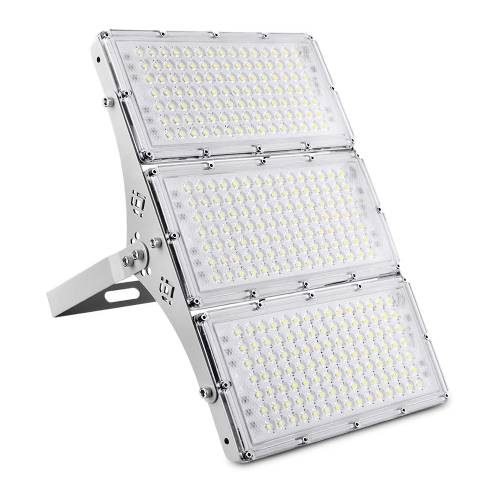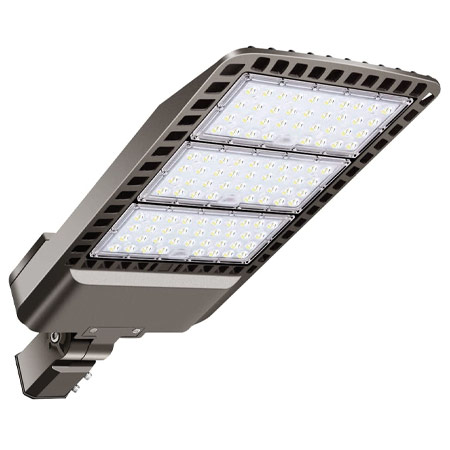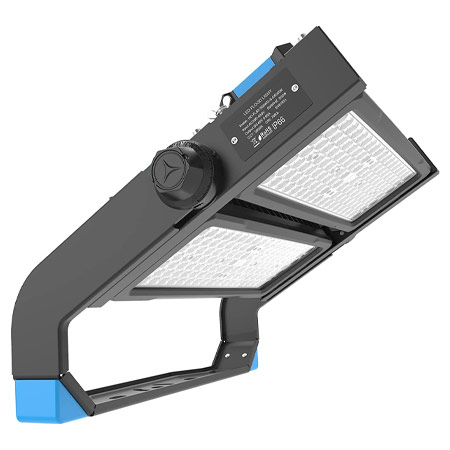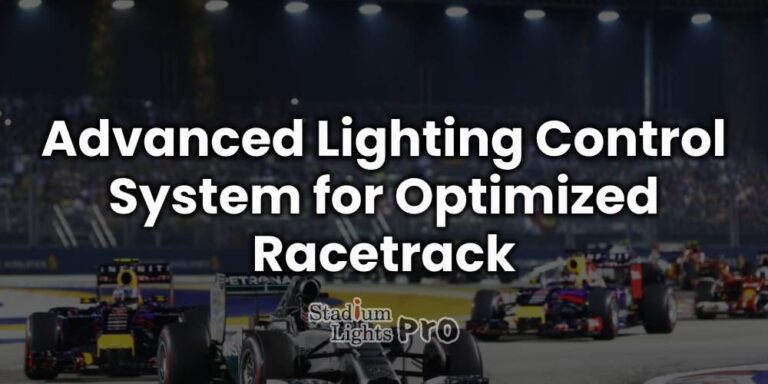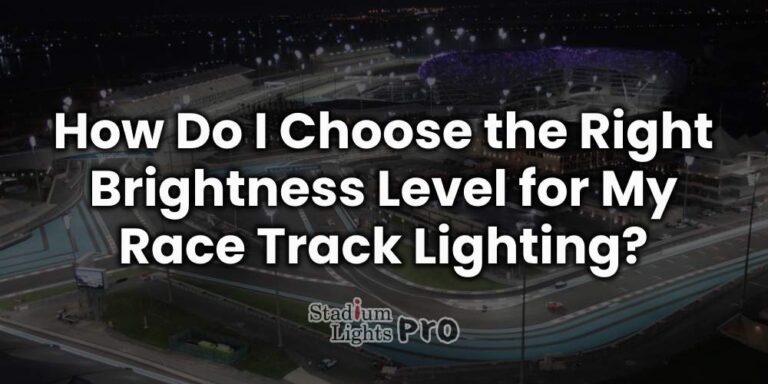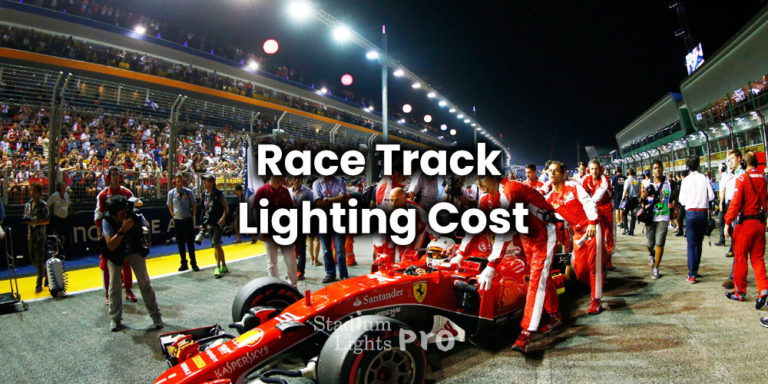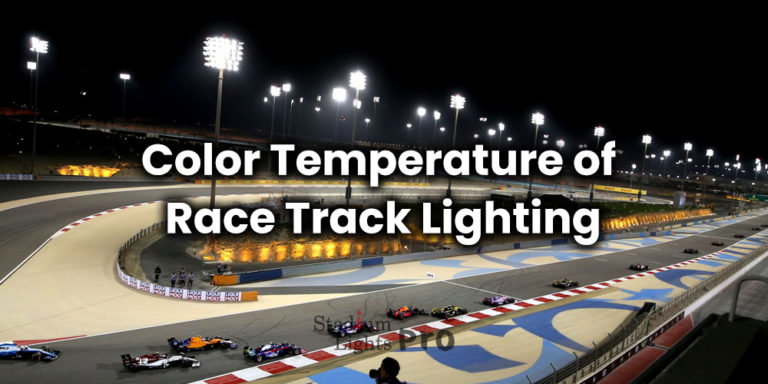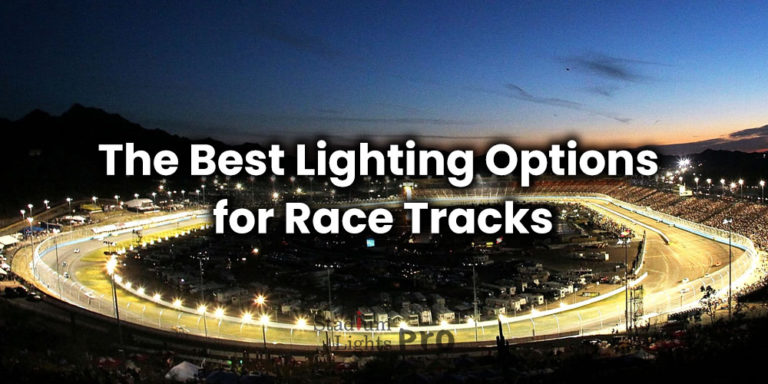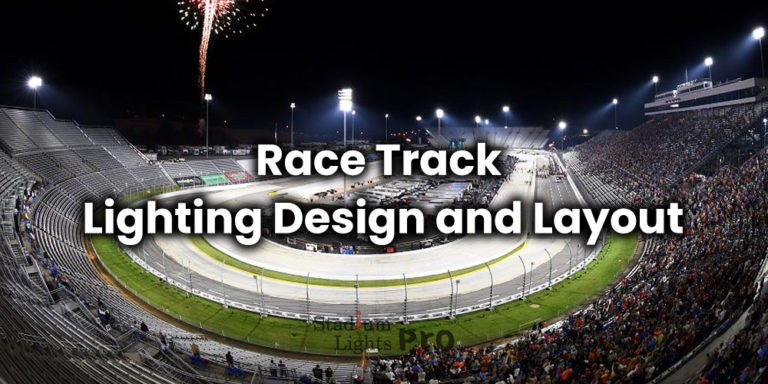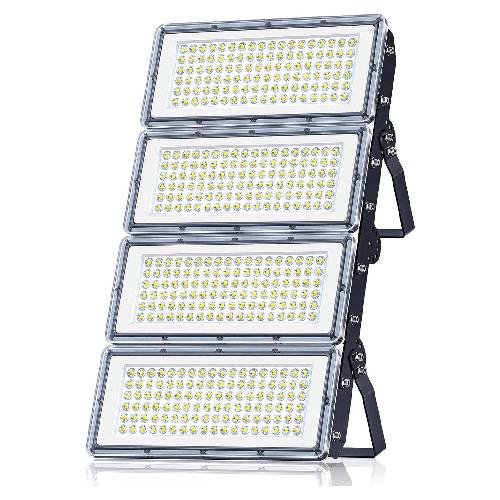
Race Track Lighting
Race track lighting is an essential aspect of any racing facility, as it ensures the safety of drivers and spectators while also providing sufficient lighting for spectators to see the race. In this page, you will find information on the different types of race track lighting systems, the benefits of using LED lights, and the factors to consider when choosing a lighting system for your race track.
We will also cover the proper lighting design and placement, as well as tips for maintaining and repairing your race track lighting system. Whether you are a race track owner or just an enthusiast, we hope you will find this information useful in understanding the role of lighting in the world of racing.
Contact us for a free lighting consultation
Table of Contents
ToggleRace track lighting frequently asked questions
What type of lighting is best for a race track?
LED lighting is generally considered the best type of lighting for a race track because it is energy efficient, long lasting, and produces a bright, consistent light. It is also less prone to failure than other types of lighting, making it a reliable choice for a high-stakes environment like a race track.
How much lighting is needed for a race track?
The amount of lighting needed for a race track will depend on the size of the track, the type of racing being conducted, and the time of day the races are held. Generally, race tracks will need a minimum of 500 to 750 lux (a unit of measure for light intensity) for racing to take place safely. However, some tracks may require more lighting, depending on the specific requirements of the event.
Can LED lighting be used for outdoor race tracks?
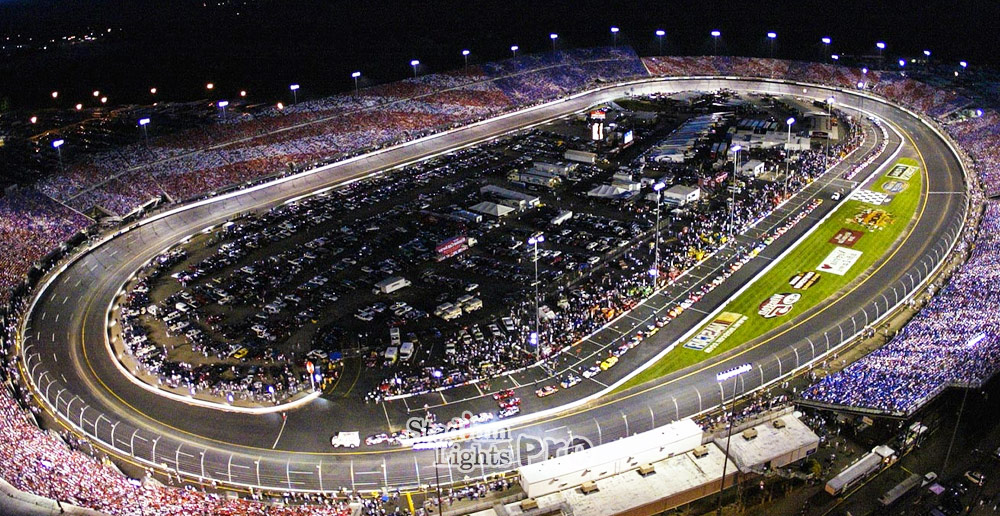
Yes, LED lighting can be used for outdoor race tracks. In fact, it is often the preferred choice because it is durable and resistant to weathering. LED lighting can withstand extreme temperatures, rain, and other environmental factors, making it a reliable choice for outdoor use.
How is the lighting system for a race track designed?
The lighting system for a race track is typically designed with the specific needs of the track in mind. Factors that are taken into consideration include the size and layout of the track, the type of racing being conducted, and the time of day the races are held. The lighting system is designed to provide the necessary level of illumination for safe racing conditions while also minimizing shadows and glare.
How is the lighting system for a race track maintained?
The lighting system for a race track should be regularly inspected and maintained to ensure that it is operating at optimal performance. This may include cleaning and replacing lamps and fixtures, as well as performing routine maintenance on the electrical system.
How is the lighting system for a race track controlled?
The lighting system for a race track is typically controlled using a central control panel or computer system. This allows the operator to adjust the intensity and focus of the lights as needed, depending on the specific needs of the event. Some race tracks may also have dimmer switches or other controls to allow for further customization of the lighting.
How long do race track lighting systems last?
The lifespan of a race track lighting system will depend on the specific type of lighting used, as well as the level of maintenance and care it receives. LED lighting has a longer lifespan than other types of lighting, with an average lifespan of around 50,000 hours. This means that with proper maintenance, a race track lighting system using LED lighting could last for many years.
How much does it cost to install a race track lighting system?
The cost of installing a race track lighting system will depend on a number of factors, including the size of the track, the type of lighting used, and the complexity of the installation. In general, a race track lighting system can cost anywhere from tens of thousands to hundreds of thousands of dollars to install.
Can a race track lighting system be retrofitted or upgraded?
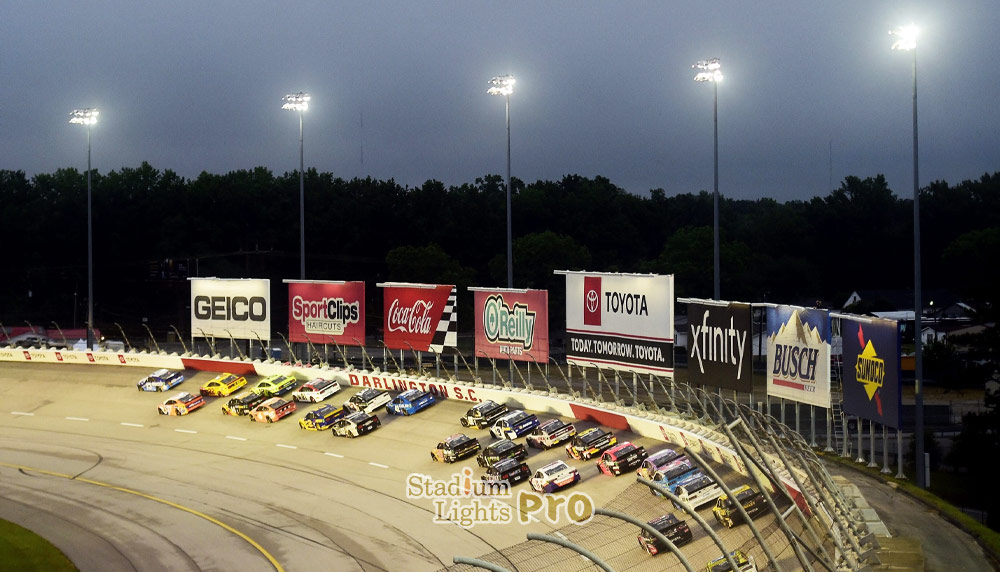
Yes, it is possible to retrofit or upgrade a race track lighting system. This can be done to improve the performance of the lighting system, increase energy efficiency, or upgrade to a newer, more advanced technology.
Can a race track lighting system be used for other events or activities?
Yes, a race track lighting system can often be used for other events or activities, such as concerts, festivals, or other sporting events. The lighting system can be adjusted as needed to meet the specific needs of the event, and it is typically designed to be flexible and adaptable to a variety of uses.
How do I choose the right lighting system for my race track?
There are several factors to consider when choosing the right lighting system for a race track, including the size and layout of the track, the type of racing being conducted, and the time of day the races are held. Working with a professional lighting company can help you choose the right lighting system for your race track.
Can a race track lighting system be automated or controlled remotely?
Yes, a race track lighting system can often be automated or controlled remotely using a central control panel or computer system. This allows the operator to easily adjust the intensity and focus of the lights as needed, depending on the specific needs of the event. Some race tracks may also have dimmer switches or other controls to allow for further customization of the lighting.
Is it possible to use solar power for a race track lighting system?
Yes, it is possible to use solar power for a race track lighting system. Solar-powered lighting systems are becoming increasingly popular due to their energy efficiency and environmental benefits. A solar-powered lighting system for a race track could potentially include solar panels, batteries, and LED lighting fixtures, and it may be controlled using a central control panel or computer system.
Can a race track lighting system be used for night racing?
Yes, a race track lighting system can be used for night racing. The lighting system should be designed to provide the necessary level of illumination for safe racing conditions while also minimizing shadows and glare.
Importance of race track lighting for safety and visibility
Race track lighting is essential for ensuring the safety of drivers and spectators at racing events. Adequate lighting is necessary for drivers to see the track and navigate turns and obstacles, as well as for spectators to see the race and avoid potential hazards.
Poor lighting can lead to accidents and injuries, as well as reduce the overall visibility and enjoyment of the race for spectators.
Types of race track lighting systems
Halogen lighting
Halogen lights use a tungsten filament surrounded by halogen gas to produce light. They are relatively inexpensive and have a long lifespan, but they are not as energy efficient as other types of lighting and produce a lot of heat.
Metal halide lighting
Metal halide lights use an electric arc to produce light and are known for their high luminous efficacy (the amount of light produced per unit of electricity). They are more energy efficient than halogen lights, but they have a shorter lifespan and require more maintenance.
LED lighting
LED (light-emitting diode) lights are known for their energy efficiency, long lifespan, and high-quality light output. They are also more durable and require less maintenance than other types of lighting.
Solar lighting
Solar lighting systems use solar panels to generate electricity, which is then used to power the lights. These systems are a more environmentally friendly option, but they may not be suitable for all race track lighting needs due to their limited light output and reliance on sunlight.
Benefits of using LED lighting
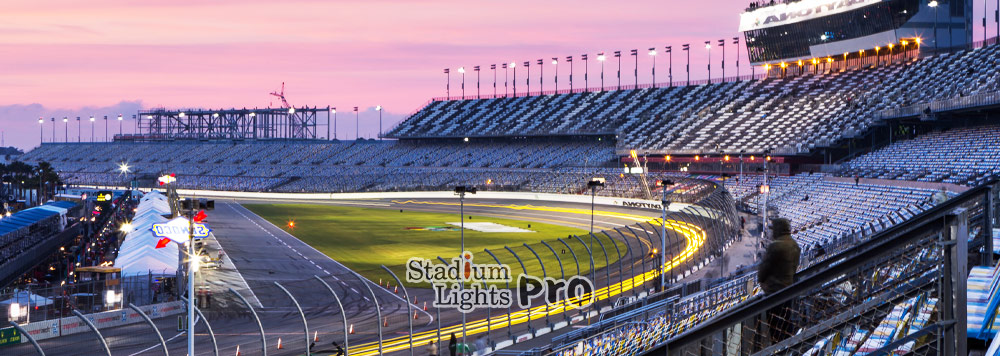
Energy efficiency
Energy-efficient lighting systems use less electricity to produce the same amount of light as traditional systems, resulting in lower energy costs and a reduced carbon footprint.
LED lighting is known for its energy efficiency compared to other types of lighting. LED lights use only a small amount of electricity to produce light and are up to 80% more energy efficient than halogen lights. They also have a much longer lifespan, which means they will need to be replaced less often, further reducing energy consumption and costs.
Solar lighting systems are also energy efficient, as they generate electricity from sunlight rather than relying on the electricity grid. However, their light output may be limited compared to other types of lighting and they may not be suitable for all race track lighting needs.
Long lifespan
A lighting system with a longer lifespan will need to be replaced less often, resulting in lower maintenance and replacement costs.
LED lighting is known for its long lifespan compared to other types of lighting. LED lights have a lifespan of up to 150,000 hours, while halogen lights typically have a lifespan of only 2,000 to 4,000 hours. This means that LED lights will need to be replaced much less frequently, resulting in lower maintenance and replacement costs over the long term.
Solar lighting systems also have a long lifespan, as they do not have moving parts and do not use consumable materials like bulbs. However, their light output may be limited compared to other types of lighting and they may not be suitable for all race track lighting needs.
High-quality light output
Good lighting quality can enhance the visibility and safety of the track for drivers and spectators, as well as improve the overall atmosphere and enjoyment of the race.
LED lighting is known for its high-quality light output compared to other types of lighting. LED lights produce a bright, crisp light that is easy on the eyes and provides good visibility. They also offer a wide range of color temperatures, allowing for the selection of the optimal light color for different times of day and weather conditions.
Halogen and metal halide lights also produce high-quality light, but they may not be as energy efficient or have as long a lifespan as LED lights. Solar lighting systems may not produce as much light as other types of lighting and may not be suitable for all race track lighting needs.
No UV lights
UV (ultraviolet) lights are not typically used in race track lighting due to their potential harmful effects on human skin and eyes. UV light has wavelengths shorter than visible light and can cause sunburn and skin cancer if exposed to it for prolonged periods of time. It can also cause eye damage, including cataracts and other vision problems.
While UV light has some beneficial uses, such as in sterilization and pest control, it is not suitable for use in race track lighting due to the potential health risks to drivers and spectators. Instead, race track lighting systems typically use visible light in the form of halogen, metal halide, LED, or solar lights. These types of lights do not produce UV light and are safe for use in race tracks.
No warm up time
Warm-up time refers to the amount of time it takes for a light to reach its full brightness after it is turned on. Some types of lighting, such as metal halide lights, may require a warm-up period before they reach their full brightness. This can be an issue in race track lighting, as the lights need to be ready to provide optimal visibility as soon as the race starts.
LED lights do not have a warm-up time and are able to reach their full brightness almost instantly when they are turned on. This makes them an attractive option for race track lighting, as they can provide immediate illumination when needed.
Halogen lights also do not have a warm-up time and are able to reach their full brightness quickly when turned on. However, they are not as energy efficient or long-lasting as LED lights and may not be the best choice for race track lighting.
Versatile lighting control system
A control system allows the operator to adjust the lighting levels and settings to suit the needs of the race and the preferences of the drivers and spectators.
A versatile lighting control system should allow for the following features:
Dimming
Dimming refers to the ability to adjust the brightness of a lighting system. Dimming is an essential feature to consider when choosing a race track lighting system, as it allows the operator to adjust the lighting levels to suit the needs of the race and the preferences of the drivers and spectators.
Dimming can be controlled manually or through a lighting control system. A control system allows for automatic dimming based on the time of day, weather conditions, and other factors.
LED lighting is particularly well-suited for dimming, as it is able to produce a wide range of brightness levels with minimal loss of efficiency. Halogen and metal halide lights can also be dimmed, but they may not be as energy efficient as LED lights and may produce more heat when dimmed.
Color temperature control
Color temperature control allows the operator to adjust the color of the lights to match the time of day or create a desired mood. For example, warmer, yellow-toned lights may be used during the day to mimic natural sunlight, while cooler, blue-toned lights may be used at night to create a more energetic atmosphere.
LED lighting is particularly well-suited for color temperature control, as it is able to produce a wide range of color temperatures with minimal loss of efficiency. Halogen and metal halide lights can also be adjusted to different color temperatures, but they may not be as energy efficient as LED lights and may produce more heat when adjusted.
Scheduling
Scheduling refers to the ability to set automatic lighting schedules based on the race schedule and other events, which allows the operator to set the lighting levels and settings in advance, reducing the need for manual adjustments during the race.
A lighting control system can be programmed to turn the lights on and off at specific times and adjust the lighting levels and settings based on the race schedule and other events. For example, the lights may be turned on at sunset and gradually dimmed as the race progresses.
LED lighting is particularly well-suited for scheduling, as it is able to produce a wide range of lighting levels and settings with minimal loss of efficiency. Halogen and metal halide lights can also be scheduled, but they may not be as energy efficient as LED lights and may require more maintenance.
Remote control
A lighting control system can be equipped with a remote control feature that allows the operator to adjust the lighting levels and settings using a device such as a smartphone or tablet. This can be particularly useful for making adjustments during the race, as it allows the operator to quickly respond to changing conditions without having to physically be at the lighting control panel.
LED lighting is particularly well-suited for remote control, as it is able to produce a wide range of lighting levels and settings with minimal loss of efficiency. Halogen and metal halide lights can also be controlled remotely, but they may not be as energy efficient as LED lights and may require more maintenance.
Multiple zones
Multiple zones refer to the ability to control the lighting in different parts of a race track independently.
For example, the lighting in the pit lane may need to be set at a different level than the lighting on the track, or the lighting in the grandstands may need to be adjusted to match the changing conditions of the race. A lighting control system with multiple zones allows the operator to adjust the lighting in these different areas independently, providing greater flexibility and control.
LED lighting is particularly well-suited for multiple zones, as it is able to produce a wide range of lighting levels and settings with minimal loss of efficiency. Halogen and metal halide lights can also be divided into multiple zones, but they may not be as energy efficient as LED lights and may require more maintenance.
Factors to consider when choosing a lighting system
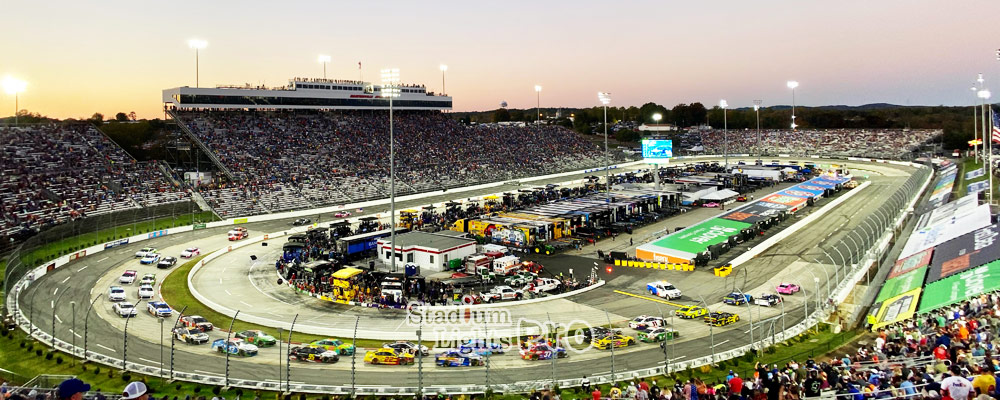
Cost
Halogen lighting is typically the least expensive option, but it is not as energy efficient or long-lasting as other types of lighting. Metal halide lighting is more expensive than halogen lighting, but it is more energy efficient and has a longer lifespan. LED lighting is the most expensive option upfront, but it is the most energy efficient and has the longest lifespan, which can result in lower overall costs over time. Solar lighting is a more environmentally friendly option, but it may not be suitable for all race track lighting needs due to its limited light output and reliance on sunlight.
Light output
The light output of a lighting system is typically measured in lumens. The higher the lumens, the brighter the light.
Halogen lighting has a moderate light output, while metal halide lighting has a high light output. LED lighting has a very high light output and is able to produce a wide range of brightness levels. Solar lighting has a lower light output compared to other types of lighting and may not be suitable for all race track lighting needs.
Maintenance requirements
LED lighting is known for its low maintenance requirements, as it has a long lifespan and is highly durable. It requires minimal cleaning and rarely needs to be replaced. Halogen and metal halide lights have a shorter lifespan and may require more frequent cleaning and bulb replacements. Solar lighting systems also have low maintenance requirements, but their light output may be limited compared to other types of lighting and they may not be suitable for all race track lighting needs.
Environmental impact
LED lighting has a low environmental impact compared to other types of lighting. It is energy efficient, produces minimal heat, and contains no hazardous materials. Halogen and metal halide lights have a higher environmental impact due to their energy consumption and production of heat and hazardous materials.
Solar lighting systems are a more environmentally friendly option, as they generate electricity from sunlight rather than relying on the electricity grid. However, their light output may be limited compared to other types of lighting and they may not be suitable for all race track lighting needs.
Maintenance and repair of race track lighting
Tips for maintaining LED lights
LED lights are a popular choice for race track lighting due to their energy efficiency, long lifespan, and high-quality light output. Here are some tips for maintaining LED lights:
Clean the lights regularly
Dust and dirt can accumulate on the race track lights and reduce their brightness, so we need to clean them regularly to ensure they are functioning at their best.
To clean LED lights, use a soft, dry cloth to gently wipe the lights clean. Avoid using water or cleaning agents, as they can damage the lights.
It is recommended to clean LED lights at least once a month, or more frequently if needed. Cleaning the lights regularly can help to extend their lifespan and maintain their optimal performance.
Check the power supply
To check the power supply, use a voltage tester to measure the voltage at the light fixtures. The voltage should be within a few volts of the rated voltage of the lights. If the voltage is significantly higher or lower than the rated voltage, there may be an issue with the power supply that needs to be addressed.
We also need to check the power supply for any damage or loose connections. If any damage or loose connections are found, they should be repaired or tightened as needed to ensure the lights are receiving a consistent and stable power supply.
Avoid overloading the circuit
The wattage of the lights should not exceed the amperage rating of the circuit.
For example, if the circuit has a 15-amp rating, the wattage of the lights should not exceed 180 watts (15 amps x 12 volts = 180 watts). If the wattage of the lights exceeds the amperage rating of the circuit, the circuit may become overloaded, causing the lights to malfunction or potentially creating a safety hazard.
Use a surge protector
A surge protector helps to protect the track lights from voltage spikes and power surges, which can damage the lights and shorten their lifespan.
A surge protector is a device that is installed between the power source and the lights. It has a built-in circuit that senses when a voltage spike or power surge occurs and immediately cuts off the power to the lights to protect them.
Replace damaged lights
If a light is damaged or not functioning properly, we should replace it as soon as possible to avoid potentially compromising the safety and visibility of the track.
To replace a damaged light, first turn off the power to the light. Then, carefully remove the light from its fixture and dispose of it properly. Follow the manufacturer’s instructions for installing the new light, making sure to tighten any connections and secure the light in place. Once the new light is installed, turn the power back on and test the light to ensure it is functioning properly.
We may use caution when replacing damaged lights and to follow the manufacturer’s instructions to ensure the safety of the person doing the work and the proper functioning of the light.
Common problems and solutions
LED race track lights are generally reliable and have a long lifespan, but there are a few common problems that may arise. Here are some common problems and solutions for LED lights:
Lights flickering or strobing
This may be caused by a faulty driver or a power supply issue. Check the power supply and replace the driver if necessary.
Lights not turning on
This may be caused by a faulty driver or a power supply issue. Check the power supply and replace the driver if necessary.
Lights turning on and off randomly
This may be caused by a faulty driver or a power supply issue. Check the power supply and replace the driver if necessary.
Lights dimming or changing color
This may be caused by a faulty driver or a power supply issue. Check the power supply and replace the driver if necessary.
Conclusion
There are several factors to consider when choosing a race track lighting system, including the type of lighting, energy efficiency, lifespan, light output, maintenance requirements, environmental impact, and the ability to adjust the lighting levels for different times of day and weather conditions.
If you are considering updating the lighting at your race track, we encourage you to contact us for a complimentary design and layout consultation. Our team of lighting experts will work with you to understand your unique needs and provide recommendations for a lighting system that meets your requirements.
We also offer discounted pricing on a range of high-quality lighting fixtures to help you create a safe and visually appealing track. Whether you are looking to upgrade an existing system or install a new lighting system, we are here to help you make the best decision for your track. Don’t hesitate to reach out to us to get started.

